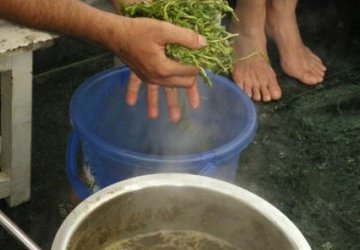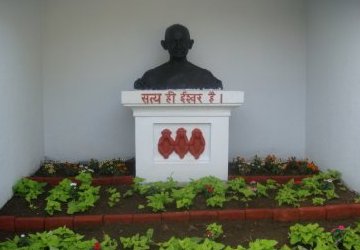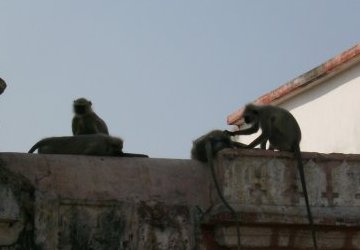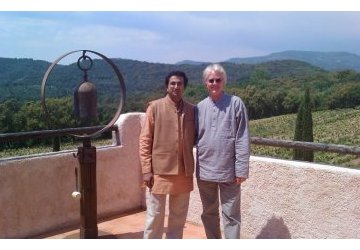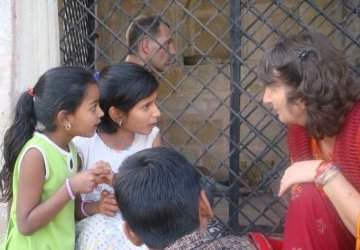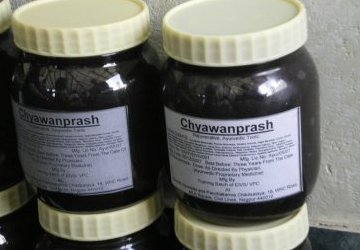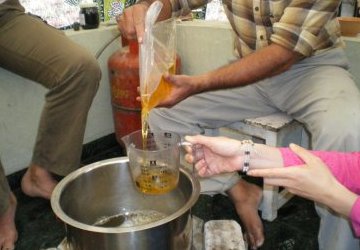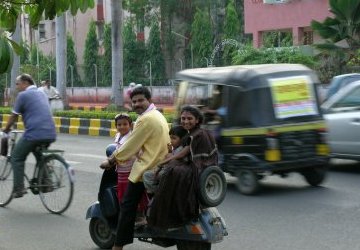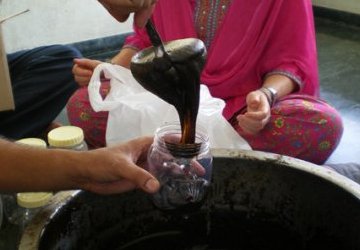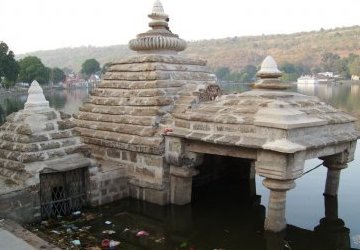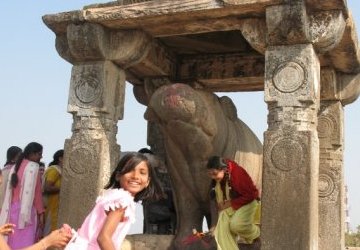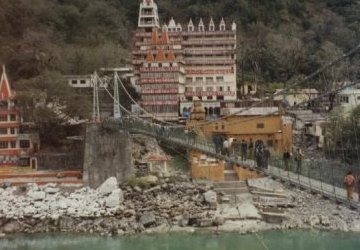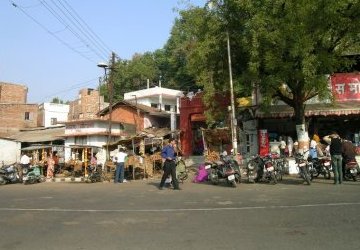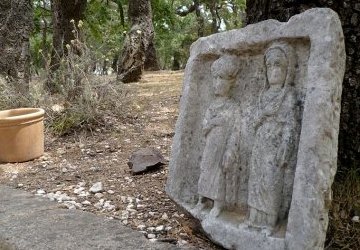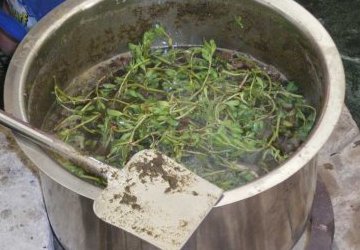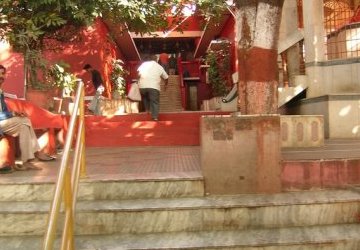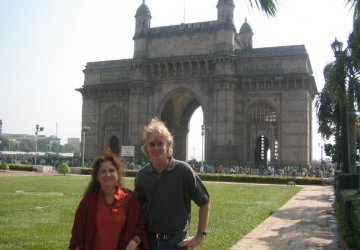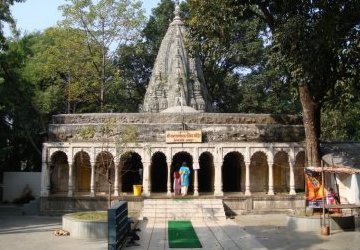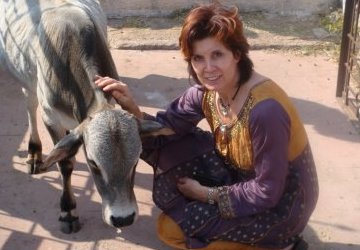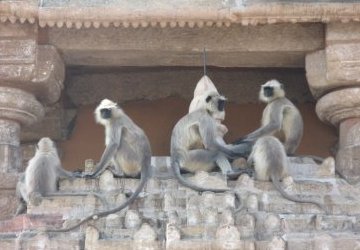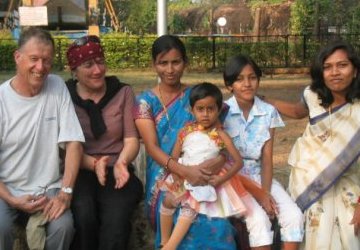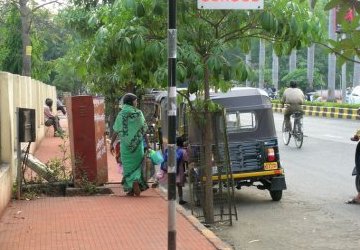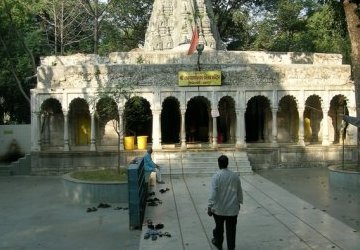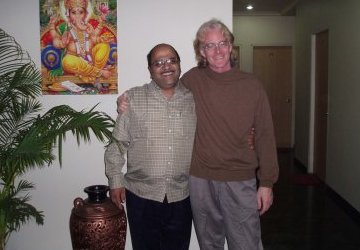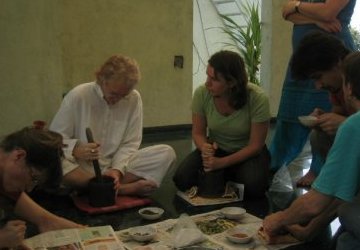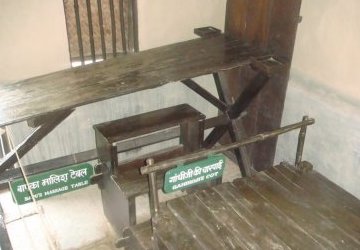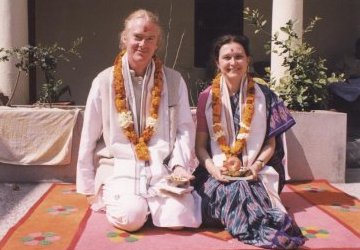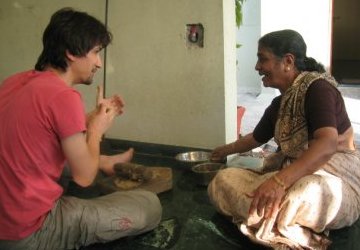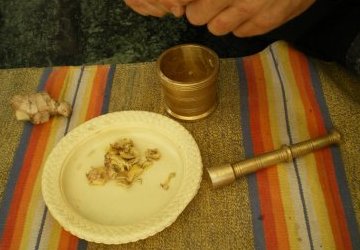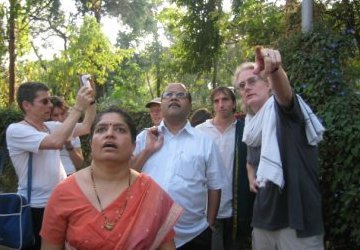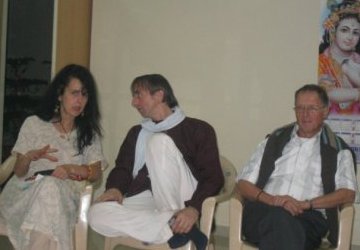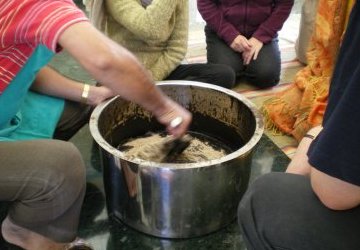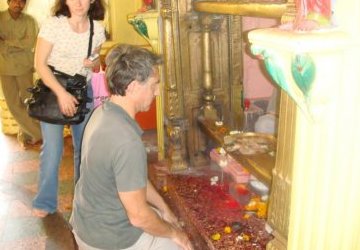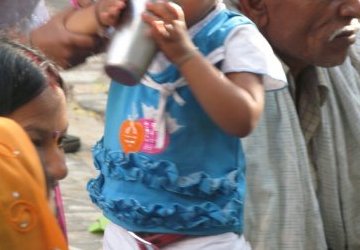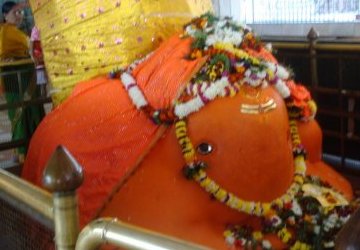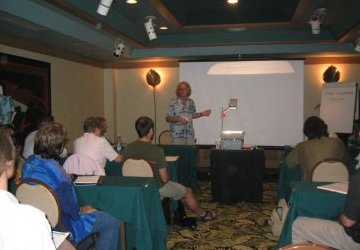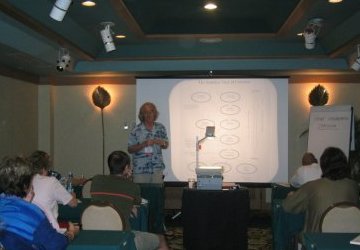Grahani: An Ayurvedic perspective on Irritable Bowel Syndrome
Life-span, complexion, strength, health, enthusiasm, corpulence, luster, immunity, energy, heat processes and vital breath – all these depend on body fire (Agni). One dies if this body fire is extinguished, lives long free from disorders if it is functioning properly, gets ill if it is deranged, hence Agni is the root cause of all. - Caraka Samhita
The root cause of all disease lies within the process of digestion, when the digestive system is working at its optimum supported by correct lifestyle and correct quanity and quality of food as per our individual Prakruti. The food we ingest is broken down in to the constituents that nourish the tissues and supports our everyday functions. When the digestive fire – Agni, which burns within our stomach, is affected by incorrect lifestyle and eating habits this ultimately affects the digestive process causing food to be either partially digested or over digested leading to the formation of Ama- toxins. Not only does incorrect digestive fire give rise to toxins but it weakens the function behind the digestive process itself.
The three doshas all play a role in the digestive process, in the location of the stomach Pachaka pitta as the essence behind the digestive fire Jathara Agni is responsible for the transformation of solid food into smaller particles as it passes into the small intestine. Here the partially digested food particles are further broken down by the continued presence of Jathara Agni in the small intestine into components that are able to be absorbed across the wall of the small intestine. Kledaka kapha functions as the protective mucosa layer lining the stomach protecting stomach tissue from the hydrochloric acid and pepsin which are nothing more than aspects of Jathara Agni. Kledaka Kapha is also responsible for moisture in the GI tract, and in the stomach mucus excreted by the mucosa cells mixes with the food substance forming chyme enabling the food to flow as liquid from the stomach to the small intestine. In the small intestine Samana Vayu is responsible for the movement of nutrients across the intestinal wall and the movement of the chyme throughout the small intestinal tract via peristalsis. Apana Vayu whose seat is the colon is responsible for the elimination of the waste material that passes from the small intestine into the colon. Vyana vayu is responsible for the movement of nutrients to the peripheral tissue via the flow of lymph – rasa and blood – rakta.
Hence digestion is ruled by Jathara Agni but supported by the three doshas. As each doshas supports digestion an imbalance of any one of the doshas will affect the role of that dosha in the digestive process and ultimately affect the function of the other doshas in digestion.
Fire cooks the food, in the absence of food, it cook the doshas, when the doshas become decreased, it cooks the dhatus and when the dhatus become depleted, it cooks (cuts short) the life itself – Astanga Hrdayam
When the digestive system is affected by one or more of the doshas leading to incomplete digestion, diseases arise in the Annavaha srota – GI Tract. Grahani is due to chronic imbalance of the one or more of the doshas affecting Jathara Agni leading to weakness in the duodenum. The function of the duodenum according to Ayurveda is not only to digest the food but to “hold” on to the food until it is digested, it then releases the food allowing it to pass into the colon where it is excreted under the influence of Apana Vayu. Due to weak digestive fire – Agni, the duodenum becomes weakened and its function is inhibited, it will then either release its contents early than normal into the colon with the food being “uncooked” or it will retain its contents for longer periods releasing the food into the colon that is “overcooked.” Due to this factor one of the main symptoms that defines grahani is alternating loose bowel motions with constipation. These very symptoms are presented in Irritable Bowel Syndrome.
The primary cause of grahani is eating habits that directly affect Jathara Agni leading to a weakness in the small intestine. Aggravation of any one of the three doshas can be responsible for the alteration of digestion and it will depend on the aggravating factors that lead to the manifestation of disease. The causative factors that lead to the alteration of normal digestive fire known as Sama Agni are those same factors that cause the three types of deranged Agni , them being; Vishama Agni – due to aggravated Vata, Tikshna Agni – due to aggravated Pitta, and Manda Agni – due to aggravated Kapha. However grahani may also be caused by untreated chronic diarrhoea which is itself caused by doshas affecting the process of digestion.
The patient of diarrhoea who does not try much (to get cured of it) becomes affected by disorders of grahani; so also even others who indulge in things (food and activity) which destroy the Agni. – Astanga Hrdayam
Prior to the manifestation of grahani there will be pre-signs and symptoms indicating the development of the disease. One may experience slower digestion of food, hyperacidity, bad taste in the mouth, anorexia, increased thirst, gastric reflux, tinnitus and the noise of gurgling in the abdomen. One may also feel lightheaded and notice a decrease in energy levels as Rasa dhatu is not properly nourished due to inadequate absorption of nutrients across the intestinal wall and inferior quality of nutrient due to improper digestion. As the disease progresses one may loose weight, experience dyspnoea, notice the retention of food in the stomach and start to experience fainting, headache and oedema in the extremities.
Grahani caused by vata leads to symptoms indicating imbalance of the five vayu not only in the Annavaha srota but also in other areas of the body. The person suffering from grahani can presents with dryness of the palate, noise in the ears - tinnitus, cough, dyspnoea all caused by Prana vayu aggravation. Aggravation of Apana vayu leads to constipation; increased frequency of bowel motion, flatulence, passing wind on passing a bowel motion, frothy loose motions, painful bowel motions due to intestinal cramping, dry feces, and pain in the rectum. Aggravated Samana vayu fans Jathara Agni either igniting the fire further increasing hunger or blowing it out causing variable appetite and increased Samana vayu activity causes loose bowel motions due to increased peristalsis in the small intestine. Aggravation of Vyana vayu leads to cardiac pain, vata affecting mamsa dhatu causes pain in the sides of the abdomen, thighs, groin and neck. The individual craves all types of food and feels satisfied when they have eaten.
The disease caused by Pitta produces decolouration of the faeces due to Ranjaka Pitta aggravation so that the faeces are of bluish or yellow colour, the body odor of the individual is fetid, aggravation of Pachaka pitta causes hyperacidity resulting in heart burn and sour belching, also affecting the quality of stool so that it is liquid in consistency. Anorexia and loss of thirst are also present in pitta type grahani.
In grahani caused by kapha, Kledaka kapha in the stomach is increased damping Jathara Agni leading to Manda Agni. Excessive Kledaka kapha causes nausea and vomiting, heaviness in the stomach, retention of undigested food in the stomach leading to fermentation and burping with bad smell and loss of appetite. Avalambaka kapha that is aggravated causes cough with mucus, there is also aggravation of Bodhaka kapha causing excess salivation and mucus in the mouth and loss of taste due to saturation. Excessive Kledaka kapha passes into the colon and is passed in the stools that are broken and may be considerable in quantity. Due to excessive kapha in the body one may feel lethargic and weak yet does not appear by physical observation to be showing signs of tissue weakness.
Grahani can also be caused by a combination of two of the doshas or all three. In this case the disease will present with a combination of all three types of grahani as described above.
Treatment of grahani is reliant on treating the offending dosha or doshas; however treatment will be focused ultimately on correcting Agni and strengthening the small intestine. One treatment that is effective for treating all types of grahani is the consumption of buttermilk as it is easily digestible, stimulates and strengthens the digestive fire and because of its energetic it is balancing to all three doshas. Where there is ama present in the disorder then digestive agents are given to stimulate the digestive fire in order to digest ama along with Langhana - reducing therapy to reduce the production of ama and eliminate that ama which is already in the body. Ama having similar qualities to kapha needs to be removed from the body via catabolic measures before one can treat the dosha solely.
Having removed the ama the treatment turns to treating the offending dosha, vata is treated via snehana therapies – oleation measurements often in the form of medicated ghee to lubricate Annavaha srota pacifying Prana vayu, Udana vayu and Samana vayu. Basti’s – medicated oil and decoction enemas are also indicated in Vata grahani which pacify Apana vayu bringing all other vayu’s into balance. These are first administered depending on the individual’s condition and are then followed by Virechana – purgation therapies. Herbs utilized in the treatment of Vataja grahani include Dashmula – the ten roots: 1Bilva - Aegle marmelos, 2Patala – Stereospermum suaveolens, 3Gambhari – Gmelina arborea Roxb., 4Syonaka – Oroxylum indicum, 5Agnimantha - Premna integrifolia Linn, 6Salaparni – Desmodium gangeticum, 7Prisniparni – Uraria picta., 8Brihati – Solanum indicum Linn, 9Kantakari – Solanum xanthrocarpum, 10Gokshura – Tribulus terrestris Linn; Shunti – Zingiber officinale, and Triphala – the three fruits: 1Amalaki – Emblica officinalis, 2Bibhitaki – Terminalia belerica and 3Haritaki – Terminalia chebula.
Treatment of Pitta grahani is focused on pacifying pitta accomplished via the administration of cooling digestive herbs and Virechana – purgation therapies that effectively treat the very site of the disease that happens to be the seat of the Pitta dosha. Herbs used in treating Pittaja grahani include Candana – Santalum album, Musta – Cyprus rotundus, Kutaja – Holarrhena antidysenterica and Nimba – Azadiracta indica.
Kapha treatment is focused on lightening, heating and reducing therapies and medication. Kledaka kapha the culprit in damping Agni is brought into balance by emesis therapy and by strengthening the digestive fire. Herbs prescribed for Kaphaja grahani included Trikatu – the three pungent’s: 1Shunti – Zingiber officinale, 2Maricha – Piper nigrum and 3Pippali – Piper longum; Amalaki – Emblica officinale, Haritaki – Terminalia chebula, Pippali – Piper longum and Marica – Piper nigrum.
Ultimately by attending to correct eating habits and by maintaining balanced digestion one not only avoids grahani but all other diseases.
He who indulges in food as and how he desires without considering whether the food is incompatible by its very nature, by its combination, by its processing, and lives on happily, does so by the strength of his digestive fire. Hence the digestive fire should be protected by every effort, because when it is lost the person becomes lost (dies), when it gets seized by the doshas the person gets seized by the group of diseases, when it is normal (Sama Agni) the person enjoys long life free from disease. - Astanga Hrdayam
References:
– Lad, Dr. Vasant. Frawley, Dr. David., Yoga of Herbs. Wisconsin USA. Lotus Press 1986 Second edition 1988.
– Pandey, Dr. Gyanendra. Dravyaguna Vijnana. Varanasi India. Krishnadas Academy, Second edition 2002.
– Sharma, Prof. P.V. Caraka Samhita (Text with English translation), Jaikrishnadas Ayurveda Series. Varanasi India: Chaukhambha Orientalia, 2000.
– Sharma, Prof. P.V., Sodasangahrdayam – Essentials of Ayurveda. Motilal Bandarsidass Publishers Private Ltd, Delhi 1993.
– Srikantha Murthy, Prof. K. R. Astanga Hrdayam; Varanasi India. Krishnadas Academy, Fourth 1999.
Brenden Skudder © 2004


